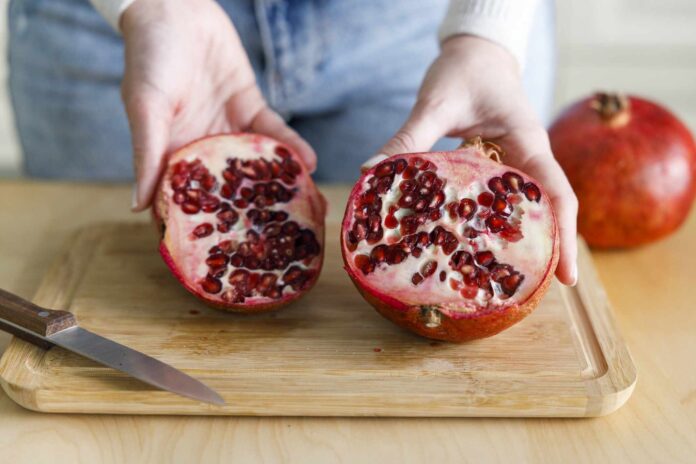Pomegranates (Punica granatum) are a vibrant fruit celebrated for their edible seeds, packed with nutrients and flavor. While finding these seeds can seem a little tricky, knowing the right techniques and how to incorporate them into your diet can significantly boost your health. This guide breaks down how to extract seeds efficiently, store them properly, and enjoy their nutritional benefits.
Extracting Pomegranate Seeds: Two Easy Methods
Pomegranate seeds, those jewel-toned gems, can be a bit stubborn to remove, but the process can be simplified with the right approach:
- The Water Bowl Method: This is generally considered the easiest. Cut the pomegranate in half. Hold one half over a large bowl of water and gently flex the pomegranate. The seeds will fall out, while the inedible white pith will float, allowing you to easily separate them.
- Manual Extraction: Alternatively, you can cut off the top (stem) of the pomegranate. You’ll see sections divided by white membranes (pith). Then, gently pull the seeds out by hand, holding the pomegranate over a bowl to catch them.
Storing Pomegranate Seeds for Longer
Once you’ve extracted the seeds, their preservation becomes key. Unlike the fruit’s protective peel, the seeds spoil faster:
- Refrigeration: Stored in an airtight container, pomegranate seeds can last up to three weeks (21 days) at temperatures between 39-43°F (4-6°C).
- Freezing: For extended storage, freezing is ideal. It effectively halts bacterial growth. Note that while freezing preserves the seeds, quality gradually diminishes over time, affecting color, taste, and smell.
Choosing the Best Pomegranates & Buying Seeds
Selecting a good quality pomegranate or buying pre-packaged seeds can greatly impact their taste and shelf life:
- Local is Better: When possible, choose locally sourced pomegranates, as they often have a longer shelf life due to reduced shipping time.
- Check for Damage: Avoid fruits with signs of damage, which can accelerate spoilage.
- Feel for Firmness: Opt for fruits that are firm to the touch. Overripe pomegranates have soft, dull skin with brown spots.
- Observe Color: As pomegranates ripen, they transition from green to red, a color change driven by antioxidants.
- When Buying Pre-Packaged Seeds:
- Check the Date: Always look for the “best by” or “use by” date.
- Examine the Packaging: Ensure the container is intact—no tears, holes, or discoloration. Avoid packages that are softening or have ice crystals.
- Read the Label: Verify that the product contains 100% pomegranate seeds without added sugars.
Delicious Ways to Incorporate Pomegranate Seeds
Adding pomegranate seeds to your diet is a simple way to boost both flavor and nutrition. Here are some exciting ideas:
- Smoothies: Blend them with pineapple, banana, raspberries, and almond milk.
- Slushies: Mix them with pomegranate juice, lemon juice, and coconut water.
- Yogurt Parfaits: Add them to Greek yogurt, topped with granola and coconut.
- Oatmeal Toppings: Sprinkle them over oatmeal with nut butter, chia seeds, and honey.
- Salads: Toss them into mixed green salads with sliced oranges, crumbled goat cheese, and sliced almonds.
Nutritional Powerhouse: What Pomegranate Seeds Offer
Pomegranate seeds are a nutritional treasure, rich in fiber, vitamin C, and potassium. They also contain phenolic compounds, which are thought to offer several health benefits, including reduced inflammation, blood pressure, blood sugar, and cholesterol levels.
A half-cup serving provides:
- Calories: 60
- Fat: 0.25g
- Sodium: 2.8mg
- Carbohydrates: 13.5g
- Fiber: 5.5g
- Protein: 1g
Potential Risks & Considerations
While generally safe, it’s important to be aware of:
- Allergies: Pomegranate allergies are uncommon, but they do exist.
- Digestive Discomfort: Eating a large quantity of pomegranate seeds at once might lead to diarrhea.
Enjoying pomegranates—whether you extract the seeds yourself or buy them pre-packaged—is a delicious and healthy way to enrich your diet. By understanding the best practices for selection, extraction, and storage, you can maximize the nutritional benefits of these vibrant seeds.





























